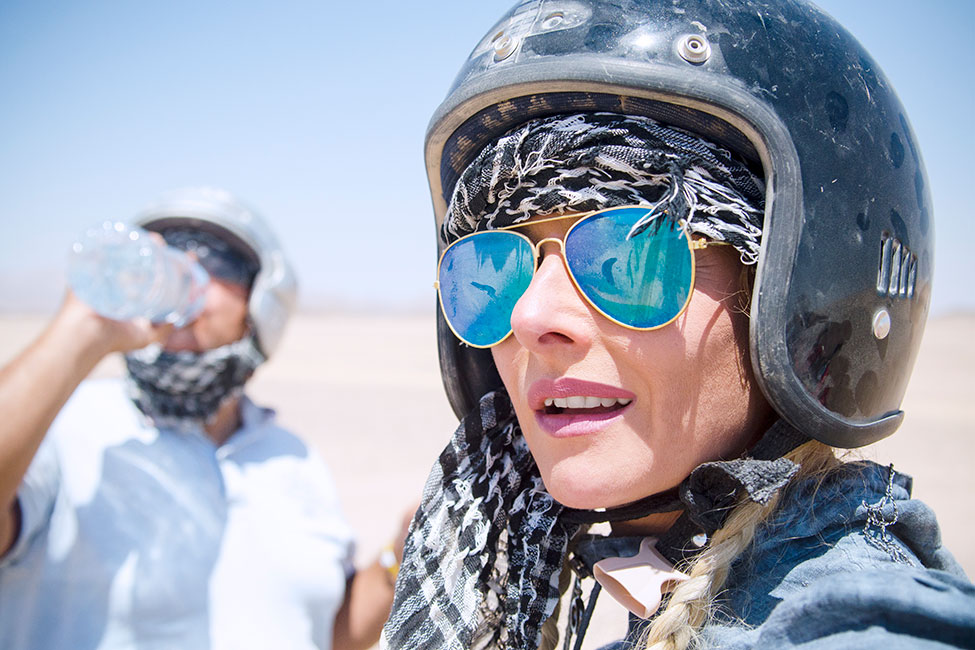Riding your bike in heatwaves
Riding your bike in heatwaves

©Biserka Stojanovic/itock
Between the burning sun and boiling tarmac, summertime motorbike riding can often become uncomfortable. Here are a few tips to stay cool on your bike when the temperatures start to rise and the heatwaves set in.
Adapt your gear
When the temperatures start to rise, people are often tempted to ditch heavy, cumbersome garments in favour of shorts and t-shirt. Never do this – AGATT (All Gear All The Time)! A fall, even at low speeds, can have dramatic, irreversible consequences. We recommend investing in some proper summer gear: light-coloured, light-weight leather and vented or mesh garments, vented gloves and helmet, shoes rather than boots and hi-tech perspiration absorbent underwear.
Up to 30-35°C, vented garments are generally sufficient to keep you cool on the road. However, if you’re sensitive to heat or if the temperatures start creeping over 35°C, you need to take a few extra precautions to avoid the discomfort of excessive perspiration, which can lead to dehydration, which can in turn cause heat stroke and heat exhaustion.
High temperatures are generally synonymous with bright sunlight. Not only is it hot, but the sky is generally cloudless. However, with the flow of air as you ride, you don’t always feel the sun burning exposed parts of your body, often the neck, wrists and nose. The neck is one of the most vulnerable parts of the body: wear a neck gaiter, or a firmly attached scarf or bandana.
Change your pace
Whenever possible, ride when the temperatures are coolest: early morning or evenings, or when there is the least sun.
Stop for regular breaks, preferably in the shade, and take the time to cool down and drink water (not too cold). No alcohol – it will speed up dehydration!
Drop the temperature
Keep in mind that it is essential to look after your brain and to make sure that it receives an adequate supply of fresh blood. The brain is supplied by the carotid artery, which is in the neck, just below the ears. This part of your body is relatively protected in the case of falls, but very exposed to wind flow, so it is a good idea to protect it. Soak your cotton neck gaiter in water and wear it high up the neck so that it envelopes the back of the neck up to your ears. As the humidity evaporates by the flow of hot air, it will lower the skin’s temperature (and thus that of the blood at this spot). Don’t hesitate to remoisten your neck gaiter often, before it dries out completely.
Do the same thing with the sleeves of your jacket: pour water down your jacket sleeves just before you set off after each halt and you’ll be able to ride for a few minutes with cool wrists and rehydrated skin.
Feel like getting away from it all?
See our suggestions for novel trips and must-see places to visit near your home or holiday destination.